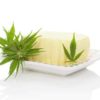Guides
Wild Weed: Does Wild Cannabis Exist?
Can landrace marijuana strains grow in the wild?
Cannabis has been used by humans for thousands of years and during this time many cannabis plants have been taken from their original environment, planted, grown, and cultivated in more controlled environments. With all the cross breeding to make new strains like Purple Dog Shit and Alien OG nowadays, is there such a thing as “wild weed?”
The constant crossing of strains to create new strains and increase potency has made it hard to find a pure landrace strain at your local dispensary or anywhere on the market. Fortunately, despite the extreme amount of crossbreeding between strains, cannabis landraces can still be found growing around the world.
Wild Marijuana Or Ditch Weed
Industrial hemp was widely cultivated in the US’s Midwest during the 20th century. This was mostly to support the America’s war efforts in World War II. Despite industrial hemp factories shutting down the plants previously cultivated for fiber, the hemp plants have naturally re-seeded and now grow wild in states like Oklahoma, Missouri, Nebraska, Indiana, and Minnesota. There is still wild weed growing all throughout the United States especially in the mid-west.
The Drug Enforcement Administration defines ditch weed as “wild, scattered marijuana plants no evidence of planting, fertilizing, or tending.” The DEA has a Domestic Cannabis Eradication/Suppression Program which aims to eradicate cannabis in the U.S.
According to a report from 2003, 99% of the cannabis eliminated under the suppression program was ditch weed. Eradicating wild weed is a particularly hard task. Indiana has a high concentration of feral weed. So bad that authorities in the area have given up on trying to get rid of it.
One police spokesman said, “you can eradicate ditch weed as well as you can eradicate dandelion.”
Wild weed can be hard to get rid of because the seeds can lie dormant for 7 to 10 years before they eventually sprout.
Foraging For Wild Weed
The author of “How to Grow Cannabis At Home: A Guide To Indoor Medical Marijuana Growing,” Glenn Panik, has created a guide for finding wild marijuana. He claims it’s not unusual to find cannabis plants thriving from roadsides to mountains. In fact, Hindu Kush is named after the mountains where the plant grows naturally.
If you’re gonna go marijuana hunting, you should prepare to look for a variety of leaf shapes and plant sizes because the environment they grow. Cannabis can survive with little water and in poor soil. In fact, most feral marijuana is found in harsher dry conditions.
Urban footpaths abandoned construction sites, and other manmade things that are next to disturbed soil and lots of sun are good places to look for wild weed. On the other hand, it’s hard to find wild marijuana in areas with fertile and moist soil. So, look in places with drier soil.
The plants found near man-made areas will not have many buds on them, but you can take them home and cross-breed them with your strains to get better yields that can grow in the local environment. Be sure to respect the wild marijuana plants you come across. If you’re going to take some, be sure to spread some of the seeds around so that it continues to grow.
Plus if you end up liking that strain the next time you go back to where you found it there’ll be plenty new ones blooming. Also, beware of your local laws on possessing marijuana. Foraging for weed can get you into trouble in most of the United States.
If you’re not in a state with legal marijuana in 2017 you may want to hold off on your marijuana foraging adventures, several states became legal in 2016 so see if your local laws changed.
Good luck on your hunt for wild weed, the seeds you find and cross-breeding may lead to the creation of a legendary cannabis strain.
Landrace Cannabis Strains Across The Globe
There are still landrace strains, which are cannabis strains that have adapted to the local environment based on geographic location. A landrace strain is a local cannabis strain that adapted to the environment of its geographic location. One example of a landrace is Lamb’s Bread, which was found to grow naturally in the Jamaican climate. Some strains are named after their rarity but most other landrace strains have the location they originate within the name.
For example, the Hindu Kush and Durban Poison are two strains with names that contain hints to their geographical origin. Finding these strains at dispensaries is uncommon and when you do it’s likely been grown away from the geographic origin, making it a bit less natural. From “ditch weed” in America to landraces in various countries, wild marijuana grows without being planted across the globe. Finding these strains at dispensaries is uncommon and when you do it’s likely been grown away from the geographic origin, making it a bit less natural.
The rarest landrace strains usually have their area of origin followed by the word “gold” in their name. For example, Malawi Gold is from Malawi in Africa and Colombian Gold is from Colombia in South America. The Green House Seed Company has paid for expeditions into both countries on a hunt for the rare seeds. They spent multiple days, paid locals, and purchased quads to look for Malawi Gold only to find a small field with much fewer seeds than they hoped for. So, foraging for rare weed strains is best left to the professionals with resources and time for expeditions. From “ditch weed” in America to landraces in various countries, wild marijuana that grows without being planted, fertilized or tended to continue to bloom across the world.




















